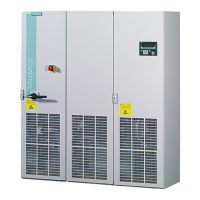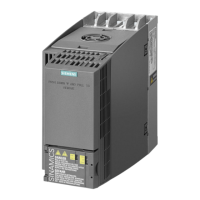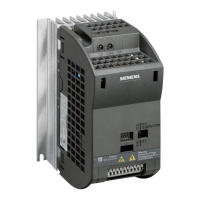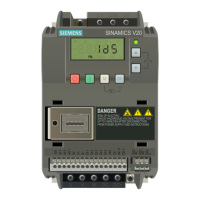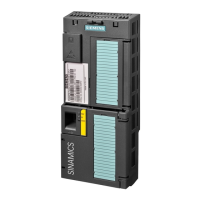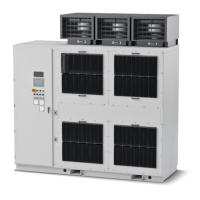Basic functions
7.20 Tolerant encoder monitoring
Drive functions
Function Manual, 11/2017, 6SL3097-4AB00-0BP5
373
If a fault is detected, then fault F3x117
1)
is output. The faulty tracks are included in the fault
value bit-coded.
-2, CUA32, D410-2 and SMC30 (only article numbers
-0AA00-5CA0 and 6SL3055-0AA00-5CA1), there is only a common signal. If you
-wave encoder without R track to one of these modules, then if track
monitoring is activated, fault F3x117
1)
is output.
To avoid this fault, at the encoder connection, you must connect the "ground encoder
supply" (pin
7) with the "reference signal R" (pin 10), as well as the "encoder supply" (pin 4)
se reference signal R" (pin 11).
1)
x = encoder number (x = 1, 2 or 3)
This function allows individual faults to be tolerated regarding the number of encoder pulses
between two zero marks.
1. Set parameter p0430.21 = 1 to activate the "zero mark tolerance" function.
The function runs as follows:
1. The "zero mark tolerance" function starts to become effective after the 2nd zero mark has
been detected.
2. After this, if the number of track pulses between two zero marks does not match the
configured number of pulses
, then alarm A3x400
1)
(alarm threshold, zero mark
distance error) or A3x401
1)
(alarm threshold, zero mark failed) is output.
3. The alarm is cleared when the next zero mark is received at the correct position.
4. However, if a new zero mark position error is identified, fault F3x100
1)
(zero mark
distance error) or Fx3101
1)
(zero mark failed) is output.
1)
x = encoder number (x = 1, 2 or 3)
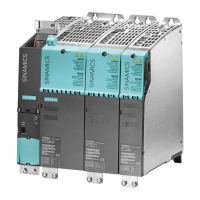
